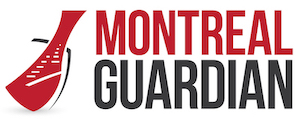Canadians are waiting longer than ever before for elective surgeries. Across the country, healthcare systems are experiencing record backlogs in surgery due to successive waves of the pandemic and shortages of nurses, doctors, and other health professionals.

There is an urgent need to ensure Canadians receive care in a timely manner by improving our health policies and systems. But there are also everyday practices and processes we can address right away to help improve delays and backlogs.
“Low-value care” describes tests and treatments that are commonly ordered despite clear evidence that they do not help with patient care — and may even cause harm.
A new report released from the Canadian Institute for Health Information and Choosing Wisely Canada evaluates this problem across 12 different low-value tests and treatments. The report looks at trends across the country before the pandemic, as well as during the first year of COVID-19.
Overall, the report shows that Canada has made good progress, with eight of the 12 areas of tests or treatments declining by 10 percent or more between 2014 and 2019. But, given that most of these tests and treatments are unlikely to be necessary in the first place, we can do even better – saving our valuable healthcare resources for care that is truly needed.
What are examples of low-value care in surgery?
Knee arthroscopy is a surgical procedure that’s appropriate for treating common knee problems, such as torn ligaments. But for adults aged 60 and older, this procedure offers little to no benefit compared to safer options like exercise therapy, injections or medications.
The good news is that Canada has reduced the number of low-value knee arthroscopies. The rate of knee arthroscopies has dropped by 46 percent in adults over 60 between 2014 and 2019. Still, 99 out of every 100,000 older adults are getting the procedure each year, with differences in rates among the provinces.
If all of Canada could achieve the rates of the lowest province, which is currently Newfoundland and Labrador, it is estimated that an additional 7,500 knee arthroscopies could be avoided across the country each year — freeing up significant surgical resources to provide more necessary patient care.
Another example is pre-operative testing. If you are getting cataract surgery or other low-risk procedures, you may be asked to go for additional testing before the operation. Evidence shows that these tests — electrocardiograms, cardiac stress tests, echocardiograms, or chest x-rays — rarely change a surgeon’s decision to operate or make surgery safer and may lead to additional unnecessary testing and delays in getting the surgery done.
The report found that between 2015 and 2019, rates of pre-operative testing prior to low-risk surgeries declined by 17 percent. However, it also shows that one in five patients who undergo low-risk surgery are still being sent for pre-operative testing.
If all of Canada could achieve the rates of the lowest province, which is currently Alberta, it’s estimated another 99,000 preoperative tests could be avoided each year.
With the health care system under extreme pressure, avoiding low-value care means faster access to care. Policies, processes, and professional practices years and decades in the making need to be undone.
Findings from the report suggest that while Canada is making progress in reducing overuse, there’s still plenty of room for improvement. Differences in rates among provinces and territories suggest that we can all work together and learn about how different health systems tackle this longstanding problem.
***
About the authors:

Wendy Levinson is the Chair of Choosing Wisely Canada.

David O’Toole is the President and CEO of the Canadian Institute for Health Information.



